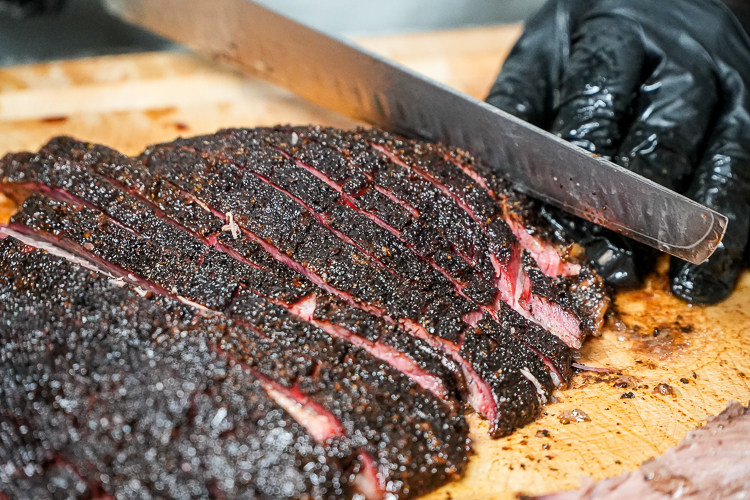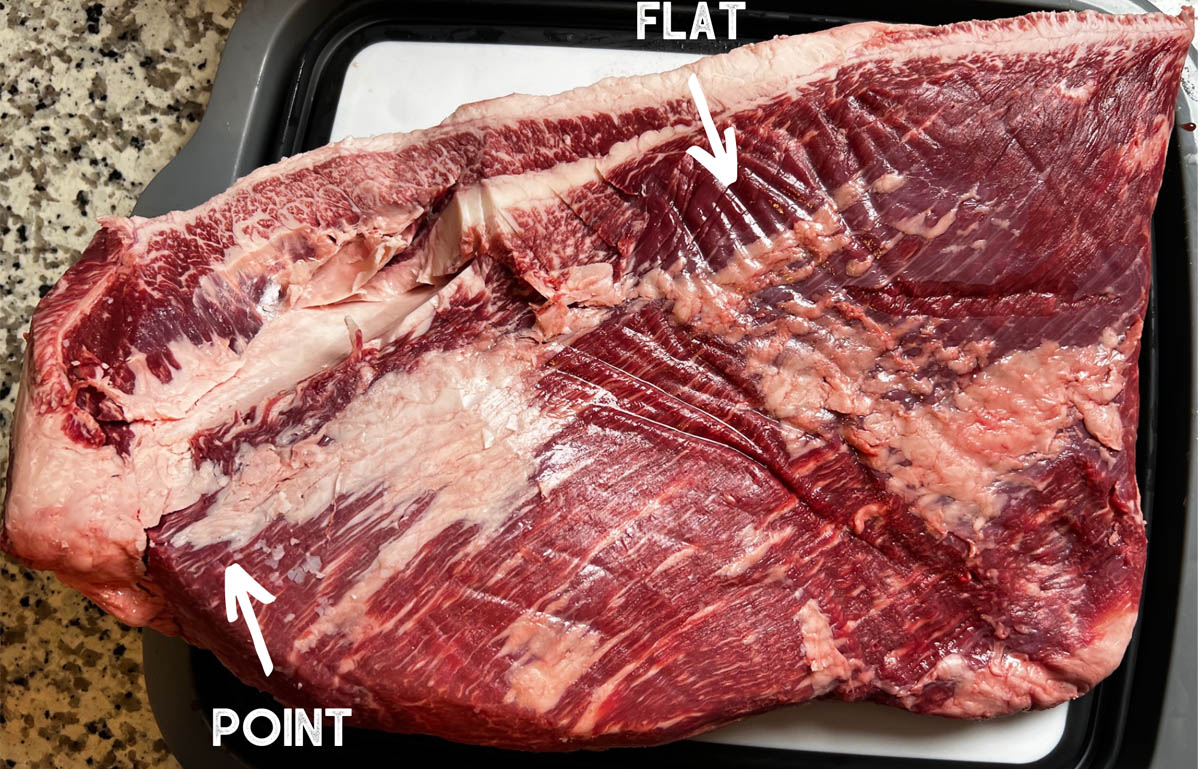Brisket is the holy grail of barbecue, and perfection is elusive. Ask 10 pitmasters how they smoke a brisket, and you are likely to get 10 different answers.
One of the most hotly debated topics is what internal temperature the brisket should be before you pull it off the smoker.
While the general consensus is between 195°F and 205°F, there are many factors to consider if you want to perfect the final part of the brisket cooking process.
What temperature is smoked brisket done?
Some briskets will finish around 195°F, and some won’t be fully tender until they reach closer to 205°F.
If you are smoking your first brisket, then a good rule of thumb is to shoot for an internal temperature of between 200°F and 203°F.

Understanding when brisket is done will help you achieve that perfect juicy slice when you finally slice it.
As you start to cook more briskets, you will begin to get an idea of how a brisket should feel when it’s done. Cooking to feel, rather than cooking to temperature, is the ideal way to cook a brisket. You want to pull the brisket when it becomes probe tender.
How to take the internal temperature of a brisket
It’s important to invest in a meat thermometer before you start smoking any meat, but especially important for large cuts like brisket.
There are many temperature probes on the market, and there are pros and cons to each kind:
Digital instant-read thermometer – my personal favorite tool for temping brisket the Thermoworks Thermapen.
These thermometers allow you to quickly measure the temperature of a brisket throughout the cooking process.
Digital probe thermometer – another great option is a digital probe thermometer. These are wired probes that you place in the meat prior to cooking and let sit in the meat throughout the cook so you can watch the temperature constantly without opening the smoker.
Wireless probe thermometer – wireless probe thermometers like the Meater have gained popularity in recent years because they connect directly to your phone without the need for wires. Most utilize Bluetooth or Wi-Fi technology and they remain in the brisket throughout the entire cook and report the temperature to your phone in real time.
Where is the best place to take a temperature reading on a brisket?
This is one of those questions that drives newbies crazy.
Briskets aren’t small, which means that the entire brisket will never read the exact same temperature. The point tends to cook a bit faster than the flat, but because of the higher fat content in the point, it’s okay to let it go a little longer.

The best place to measure temperature in a brisket is in the thickest part of the flat. This is the portion of the brisket that will take the longest to cook, so it’s the best way to ensure that your entire brisket is fully cooked and tender throughout.
Every brisket is different
While briskets typically take around 60 minutes per pound at 250°F, some will cook faster, and some will cook slower—this is why temperature is always the way to tell your brisket is finished.
Every brisket is different because every cow is different. It’s important to remember that a brisket is a muscle, and the makeup of the cut varies depending on many factors.
- Size matters when it comes to brisket. An average whole packer brisket weighs 12 to 14 pounds, but you can often find briskets that weigh 20+ pounds.
- USDA Grade – the grade of the meat is a factor in how a brisket will cook. There are 3 main USDA grades you will find when shopping for brisket: Select, Choice, and Prime. The USDA grade of the meat is determined by the amount of marbling (intramuscular fat) and the quality of the beef.
- Age of the cow – the age of the cow can be a major factor. The older a cow is, the tougher the meat will be because the muscle was used more during the life of the cow.
- Freshness – a fresh brisket will have the maximum amount of moisture. The longer a brisket has been butchered and sitting in a vacuum-sealed bag, the less moisture will remain inside the meat. Additionally, briskets that have been frozen and defrosted will have less moisture than a fresh cut of brisket that was never frozen.
What do we mean by ‘probe tender’
You will often hear pitmasters tell you that you want your brisket to be “probe tender.” Probe tender refers to the tenderness of brisket and is judged by how easily an instant-read temperature probe slides in and out of the meat.
When a brisket is “probe tender,” it means that the probe can slide into the brisket as easily as it would slide into a stick of room-temperature (or softened) butter. Another great analogy is how it feels to push a butter knife down into a jar of peanut butter. You want to have a bit of resistance, but it should slide in and out without much effort.
Cooking a brisket to “probe tender” is the best way to ensure a perfect brisket every time.
While smaller cuts of beef, like steaks and roasts, can easily be cooked to a specific temperature, larger cuts, like brisket and chuck roast, can vary depending on the particular cut you are working with.
Why do so many people swear by 203°F
Many pitmasters swear by the magic temperature of 203°F for a perfectly smoked brisket.
I’m not sure how we decided that this was the magic number, but I think that it’s human nature to want to shoot for an exact measure.
It’s safe to say that every brisket will be done at 203°F, and most people would rather have a brisket that’s slightly overcooked than undercooked, but I don’t believe there is a magic temperature that applies to every single brisket you cook.
Don’t skip the rest!
The final and most important thing to keep in mind when you are smoking a brisket is that it’s not done cooking when you pull it off the smoker. The resting period is arguably the most essential part of smoking a perfect brisket.
As a brisket rests, the temperature will decline, and the moisture in the meat will redistribute throughout the brisket. As a brisket cooks, the muscle fibers in the meat will tighten as the temperature increases. It’s important to let the brisket rest to allow these muscle fibers time to relax.
It is important to allow your brisket to rest for at least two hours before slicing. You should store the brisket in a Cambro or insulated container, like a dry cooler, so the meat stays warm during the resting period.
Explore our brisket guides
Did you miss our previous article...
https://manstuffnews.com/backyard-grilling/pork-rib-marinade
 Backyard GrillingWeekend WarriorsAdvice from DadBeard GroomingTV Shows for Guys4x4 Off-Road CarsMens FashionSports NewsAncient Archeology World NewsPrivacy PolicyTerms And Conditions
Backyard GrillingWeekend WarriorsAdvice from DadBeard GroomingTV Shows for Guys4x4 Off-Road CarsMens FashionSports NewsAncient Archeology World NewsPrivacy PolicyTerms And Conditions
